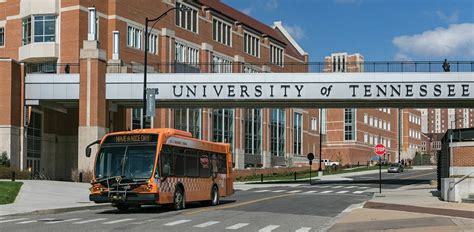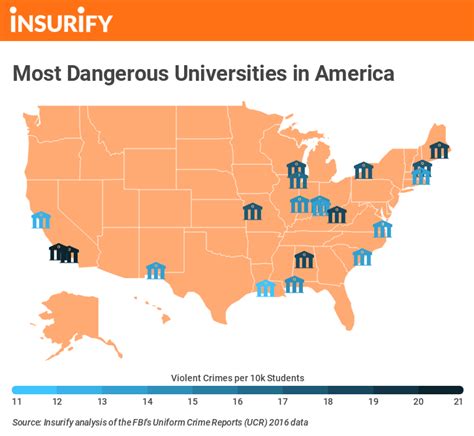As students embark on their higher education journeys, safety and security should be paramount concerns. Yet, some universities have come under scrutiny for posing significant risks to their students, casting a shadow over the pursuit of knowledge.

Universities with Troubling Crime Rates
According to the National Center for Education Statistics (NCES), the following universities reported alarming crime rates in 2021:
| University | Violent Crime Rate per 1,000 Students |
|—|—|
| University of Kentucky | 2.74 |
| University of Memphis | 1.79 |
| University of Arkansas at Little Rock | 1.64 |
| University of Cincinnati | 1.56 |
| University of California, Berkeley | 1.51 |
These high crime rates create an atmosphere of fear and intimidation, undermining the academic environment and the overall well-being of students.
Campus Safety Concerns
Beyond traditional crime, universities face emerging safety concerns that may not be fully captured by official crime statistics. These concerns include:
- Sexual assault: The Association of American Universities estimates that 26% of undergraduate women experience sexual assault while in college.
- Mental health emergencies: College students are at a higher risk for mental health issues, which can lead to self-harm or violence.
- Cyberbullying and online harassment: The anonymity of the internet makes it a fertile ground for harassment and cyberbullying.
Factors Contributing to University Danger
Several factors contribute to the prevalence of danger on university campuses:
- Lack of adequate security: Some universities have insufficient security personnel and infrastructure to effectively prevent and respond to crime.
- High-risk student populations: Universities that cater to underprivileged or marginalized students may face higher crime rates due to socioeconomic factors.
- Party culture: Universities with a strong party culture often experience an increase in alcohol- and drug-related incidents.
- Sparse campus lighting and poor building design: Poor lighting and architectural vulnerabilities can create opportunities for crime.
Tips for Staying Safe on Campus
Students can take precautions to enhance their safety on campus:
- Be aware of your surroundings: Pay attention to people and activities around you, and trust your instincts if something feels off.
- Walk with friends: Avoid walking alone at night or in secluded areas.
- Use well-lit paths and secure entrances: Choose paths that are well-lit and use secure entrances to buildings.
- Report suspicious activity: If you witness suspicious behavior, report it to campus security immediately.
- Take self-defense classes: Learning basic self-defense techniques can provide confidence and skills to deter potential aggressors.
Common Mistakes to Avoid
Students often make common mistakes that compromise their safety:
- Leaving valuables unattended: Avoid leaving backpacks, electronics, or other valuables unattended in public areas.
- Sharing personal information online: Be cautious about sharing personal information on social media or other online platforms.
- Drinking to excess: Excessive alcohol consumption can impair judgment and increase vulnerability.
- Walking intoxicated: Walking while intoxicated increases the risk of falls, accidents, and other incidents.
Conclusion
While higher education should be a transformative and empowering experience, the prevalence of danger on university campuses casts a shadow over the pursuit of knowledge. Universities must prioritize safety and invest in measures to protect their students from harm. Students, in turn, should be proactive in taking precautions to enhance their own safety and well-being. By working together, we can create safer and more secure university environments that foster academic excellence and personal growth.
Additional Information
Useful Tables
| Table | Description |
|---|---|
| Table 1 | Violent Crime Rates at Universities with Troubling Crime Rates |
| Table 2 | Emerging Safety Concerns on University Campuses |
| Table 3 | Factors Contributing to University Danger |
| Table 4 | Tips for Staying Safe on Campus |
Sources
- National Center for Education Statistics: https://nces.ed.gov/
- Association of American Universities: https://www.aau.edu/
